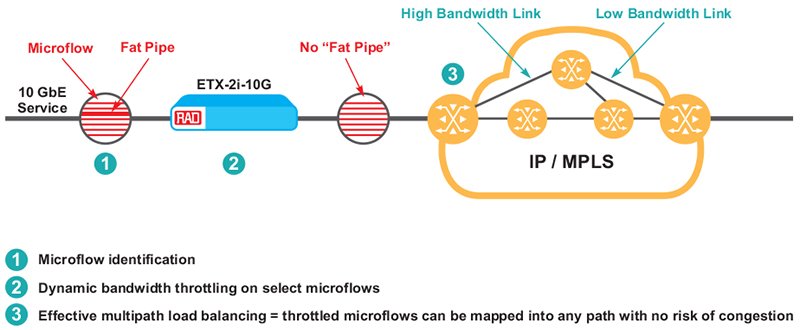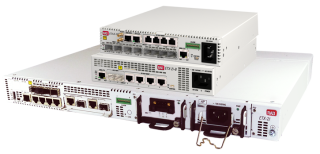Your Network's Edge®
Application Briefs
You are here
Dynamic Microflow Policing
Carriers are offering high-bandwidth business access to accommodate cloud-based services, enterprise data centers, mobile data, and other trends driving the explosion in bandwidth requirements.
Whether for wholesale or business customers, service providers need to ensure their network’s efficiency in meeting their performance commitments – a complex task in multi-G networks.
The Challenge: Meet SLA & QoE Commitments
High-rate Ethernet/IP services involve large volume of user traffic being aggregated and routed across the service providers’ core network. Service providers employ careful network planning and sophisticated traffic engineering tools to accommodate the diversity and bursty nature of user traffic, so that target SLA and Quality of Experience (QoE) expectations are met.
Core networks typically use statistical traffic distribution over different links to achieve bandwidth efficiency, most commonly using equal-cost multi-path routing (ECMP) strategy. However, this statistical approach is most efficient when hashing is employed on multiple, relatively “thin” flows, where traffic bandwidth is much lower than that of the carrier link. “Fat pipe” bursts of 10G services (or any flow higher than 1G, for that matter) tend to skew such statistical distribution, resulting in congestion, SLA degradation and traffic interruption, and directly affecting users’ QoE.
As a result, carriers are forced either to overprovision their core links, and by that jeopardize their revenue streams/ROI, or to offer these high bandwidth services at premium rates over their optical xWDM transport.
The Solution: Dynamically Manage Bandwidth Microflows
RAD now enables service providers to offer new, attractive SLAs to their customers, allowing competitive rates and high network efficiency.
With RAD’s solution, the network demarcation equipment automatically identifies and controls microflows for each user, to achieve better load balancing in high-G services.
The flows are continuously identified and monitored and when user traffic reaches high volume, at a pre-defined level (“fat pipe”), a dynamic bandwidth throttling mechanism is implemented according to customer SLA commitments. This mechanism will be in effect as long as traffic conditions remain.
The solution is flexibly configured to match the carrier’s service definition, including flow identification, traffic volume thresholds, throttling mechanism, and time for clearing “fat pipe” status.
RAD’s dynamic microflow policing solution allows carriers to offer cost-effective 10G business services that meet the needs of the majority of enterprise customers. It protects network design, eliminates the need for expensive overprovisioning of core networks and prevents service degradation from effecting subscribers.

 Typical Users
Typical Users
- Business Service Providers
- Wholesale Service Providers
 Typical Application
Typical Application
10G Carrier Ethernet and IP VPNs
Related Products
The ETX-2i provides MEF 3.0 demarcation and aggregation over any access, including over LTE/broadband. Its FPGA architecture flexibly adapts to future customer needs.



